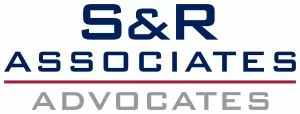On October 10, 2019, the Securities and Exchange Board of India ("SEBI") issued a circular setting out an amended framework for the issuance of Depository Receipts ("DRs") by Indian companies (the "DR Circular").
Background
Since the Depository Receipts Scheme, 2014 (the "2014 Scheme") issued by the Ministry of Finance, Government of India, became effective on December 15, 2014, issuances of ADRs/GDRs had practically halted. Although the 2014 Scheme was more liberal than the earlier regulations – for example, it permitted unlisted Indian companies to issue DRs without the requirement to obtain listing in India and also permitted unsponsored programs – certain aspects such as the roles and responsibilities of depositaries and custodians and certain tax benefits with respect to DR issuers not listed in India were not finalized. There were other concerns of the Indian government and the SEBI, including preventing the DR mechanism from being used for money laundering and round-tripping of funds back to India and identification of the ultimate beneficial owner of the DR.
The introduction of the DR Circular is a welcome move and with the recent changes to the Prevention of Money-laundering (Maintenance of Records) Rules, 2005 ("PML Rules") in September 2019, listed companies in India (or companies seeking simultaneous listings in India and overseas) can start considering DR programs, particularly if they are planning public offerings in jurisdictions such as the United States. However, unlisted Indian companies planning a DR listing overseas (without a simultaneous Indian listing) will need to wait until there is clarity on whether they are eligible to issue DRs.
The DR Circular defines DRs as "a foreign currency denominated instrument, listed on an international exchange, issued by a foreign depository in a permissible jurisdiction on the back of permissible securities issued or transferred to a domestic custodian." Although the list of permissible jurisdictions and international exchanges is yet to be notified by the Government of India and the SEBI, it is expected that Level III programs (i.e., public offerings) of ADRs on the Nasdaq and the NYSE and GDRs admitted to the standard segment of the official list of the FCA and to trading on the London Stock Exchange will be permitted.
Permissible securities are defined as equity shares and debt securities which are in dematerialized form and rank pari passu with securities issued and listed on the Indian stock exchanges.
The DR Circular is effective immediately and applies to DR issuances subsequent to the date of issue of the circular.
A brief summary of the DR framework under the DR Circular is set out below:
Eligible Issuer
Under the DR Circular, only listed Indian companies (or those seeking simultaneous listings in India and overseas) are permitted to issue permissible securities for issuance of DRs. This is more restrictive than the 2014 Scheme, which permits both listed and unlisted Indian companies to issue permissible securities for issuance of DRs (without the requirement for unlisted companies to simultaneously list in India).
The DR Circular specifies that a listed company is ineligible to issue permissible securities for the purpose of issue of DRs if it is not compliant with the requirements of the Securities and Exchange Board of India (Listing Obligations and Disclosure Requirements) Regulations, 2015, as amended (the "LODR Regulations"). As currently drafted, this requirement is fairly broad to cover even minor infractions under the LODR Regulations. Further, similar to the eligibility requirements in domestic IPOs, the DR Circular requires that none of the issuer and its promoters, promoter group and directors and the selling shareholders is debarred from accessing the capital markets by the SEBI and none of the issuer and its promoters and directors and the selling shareholders is a wilful defaulter or fugitive economic offender.
Existing shareholders are eligible to transfer permissible securities in an offer for sale ("OFS") for issuance of DRs. In an initial offering and listing of DRs pursuant to an OFS, the existing equity shareholders have piggy-back rights to tender their shares for participation in such DR listing.
Permissible Holders
Under the DR Circular, permissible holders of DRs (including their beneficial owners) exclude two categories of investors: persons resident in India and non-resident Indians ("NRIs"). It is unusual for the SEBI to specify such categories of ineligible holders – this is generally regulated under the applicable exchange control regulations issued by the Reserve Bank of India ("RBI", and such regulations, the "RBI Regulations"). Indian mutual funds registered with the SEBI are permitted to invest in DRs and regulators will need to clarify whether they are now restricted as they are persons resident in India. The restriction on NRIs is new as they are otherwise permitted by the RBI to invest in DRs. The term NRI is not defined under the DR Circular; the RBI Regulations define it as a person resident outside India who is a citizen of India. Overseas Citizens of India (OCIs), a category of persons of Indian origin that are resident outside India, are not excluded from the definition of permissible holders.
The permissible holder, including its beneficial owner, will be responsible for complying with this requirement. The impact of this requirement on existing Indian companies that already have DR programs and intend to issue DRs in the future (for example, as ESOPs to NRI employees) will need to be considered.
Permissible Jurisdictions and International Exchanges
The DR Circular requires the DRs to be listed on specified "international exchanges" in "permissible jurisdictions". Under the DR Circular, the term "permissible jurisdiction" is defined as any jurisdiction notified by the Government of India under Rule 9(1) of the PML Rules. The list of permissible jurisdictions under the PML Rules is awaited from the Government of India.
International exchanges are as notified by the SEBI from time to time. Such notification by the SEBI is also awaited. An illustrative list of DR programs provided under the DR Circular includes issuer-sponsored Level III ADR programs on the Nasdaq or the NYSE, DRs on the Main Board of the Hong Kong Stock Exchange and GDRs admitted to the standard segment of the official list of the FCA and to trading on the London Stock Exchange.
Filings/Approvals from the SEBI and the Indian Stock Exchanges
- A copy of the initial offering document is required to be filed with the SEBI and the Indian stock exchanges for review. Although not specifically stated, this appears to include the confidential document filed outside India. The filing in India is to be made through an intermediary and it is unclear whether or not the intermediary needs to be registered in India (such as an Indian merchant bank). SEBI comments on the initial offering document are to be issued to the Indian stock exchanges within seven working days. The Indian stock exchanges are required to consider such comments while granting in-principle approval, which is to be provided within 15 working days of receipt of the requisite application and documents. The final offering document is also required to be filed with the SEBI and the Indian stock exchanges as a matter of record. Under the DR Circular, if SEBI comments are not issued within the specified period, it is deemed that SEBI does not have any comments.
- In a simultaneous public offering and listing in India and DR issuance and listing on an international exchange, the DRs must be issued only after the final trading approval has been obtained from the Indian stock exchanges in connection with the Indian offering.
- Public disclosures made to the relevant international exchange are also required to be filed with the Indian stock exchanges no later than 24 hours from the date of disclosure to the relevant international exchange.
Voting Rights
The DR Circular states that voting rights on permissible securities underlying DRs, if any, shall be exercised by the DR holder through the depositary pursuant to voting instructions only from such holder. This is a departure from the 2014 Scheme, which entitles the depositary to exercise voting rights whether pursuant to voting instructions from the DR holders or otherwise. Currently, certain DR schemes have a formulation where either the DR holder instructs the depositary to vote or if the depositary does not receive instructions from the holder, the DR holder is deemed to have instructed the depositary to give a discretionary proxy to a person designated by the issuer to vote (effectively a vote in favor of management). The DR Circular appears to restrict the use of such discretionary proxy.
Minimum Public Shareholding
Under the DR Circular, the underlying permissible securities held by the depositary for the purpose of issue of DRs are excluded for calculating the minimum public shareholding (which is currently 25%). This is inconsistent with the Securities Contracts (Regulation) Rules, 1957, which were amended in 2015 to include shares underlying DRs within the ambit of "public shareholding" if DR holders have the right to issue voting instructions and the DRs are listed on an international exchange.
Foreign Holding Limits
- The listed company issuing DRs is required to ensure that foreign holding limits under the RBI Regulations are not exceeded.
- The onus is on the Indian depository to develop a system which ensures that aggregate holding of DR holders (including through offshore derivative instruments) and holding as a foreign portfolio investor belonging to the same group does not exceed the foreign holding limit under the RBI Regulations and applicable SEBI regulations. The agreement entered into by the listed company and the foreign depositary for the issue of DRs must provide that permissible holders, including beneficial owners, will ensure compliance with holding limits.
Pre-release of DRs
Under the DR Circular, the foreign depositary is not permitted to issue or pre-release DRs unless the domestic custodian has confirmed the receipt of underlying permissible securities.
Conclusion
This circular has been long awaited and should provide Indian companies with impetus to seek listing on an international exchange and increase access to foreign funds through the issue of ADRs and GDRs. There are certain gaps in the DR Circular that may need to be addressed. For example, unless there is further regulatory guidance, the DR route will remain inaccessible to unlisted Indian companies, such as start-ups in the Indian technology and venture capital ecosystem, that are seeking only an overseas listing, and these companies will need to consider alternate structures such as the listing of a foreign holding company or an affiliate. Also, while private placement of DRs and unsponsored DRs are contemplated under the 2014 Scheme, the DR Circular is silent on such matters and if the regulatory intent is to disallow these issuances, the 2014 Scheme should be amended to avoid any ambiguity in this regard.
This insight/article is intended only as a general discussion of issues and is not intended for any solicitation of work. It should not be regarded as legal advice and no legal or business decision should be based on its content.



